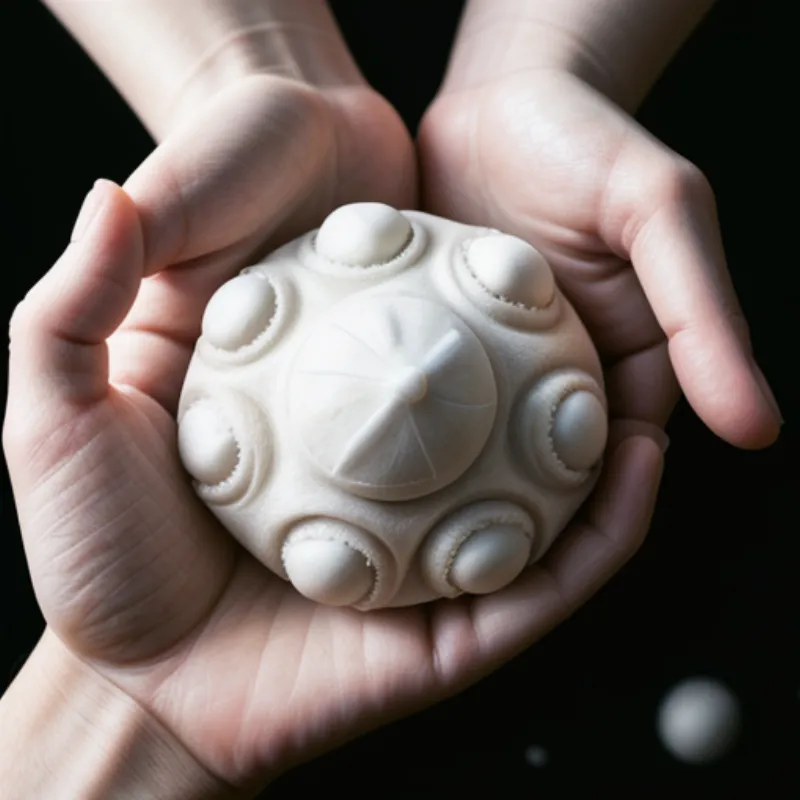Tang yuan, those delightful little glutinous rice balls, are a beloved Chinese dessert that brings warmth and sweetness to special occasions and everyday moments alike. Whether enjoyed plain or filled with a variety of sweet surprises, these chewy treats are a testament to the simple pleasures of Chinese cuisine.
Have you ever wanted to recreate these delightful morsels in your own kitchen? It’s easier than you think! This comprehensive guide will walk you through the process, from understanding the different types of tang yuan to mastering the art of achieving that perfect chewy texture. Get ready to impress your family and friends with this classic Chinese dessert that’s fun to make and even more fun to eat!
Unveiling the Delicious World of Tang Yuan
Before we dive into the recipe, let’s take a moment to appreciate the cultural significance of tang yuan. These glutinous rice balls are a staple during the Lantern Festival, symbolizing family unity and togetherness. The round shape of the tang yuan represents wholeness and harmony, making them a meaningful treat to share with loved ones.
Exploring the Variations: To Fill or Not to Fill?
While the basic recipe for tang yuan remains consistent, the beauty of this dessert lies in its versatility. You can enjoy them plain or filled with an array of sweet fillings like:
- Black sesame paste: Rich, nutty, and utterly irresistible.
- Red bean paste: Sweet and subtly earthy, a classic choice.
- Peanut butter: A modern twist that adds a touch of saltiness.
Feel free to experiment with your favorite fillings and create your own unique flavor combinations!
Gathering Your Ingredients for Tang Yuan Success
Here’s what you’ll need to embark on your tang yuan-making adventure:
For the Dough:
- 2 cups glutinous rice flour (also known as sweet rice flour)
- 1/2 cup warm water, adjust as needed
- Pinch of salt (optional, enhances flavor)
For the Filling (Optional):
- Your choice of filling (see suggestions above)
For the Sweet Soup (Optional):
- Water or your preferred liquid (ginger soup, sweet osmanthus soup)
- Sugar or rock sugar, to taste
Pro Tip: Using warm water for the dough helps activate the glutinous rice flour, resulting in a smoother, more pliable dough.
Equipment Checklist for Tang Yuan Mastery
- Large mixing bowl
- Small saucepan (if making fillings or soup)
- Slotted spoon or spider strainer
- Serving bowls
A Step-by-Step Guide to Making Perfect Tang Yuan
-
Creating the Tang Yuan Dough:
In a large mixing bowl, combine the glutinous rice flour and salt (if using). Gradually add the warm water, kneading the dough until it comes together into a smooth, elastic ball. If the dough is too dry, add a teaspoon of water at a time until desired consistency is reached. Conversely, if the dough is too sticky, add a tablespoon of glutinous rice flour at a time.
Expert Tip: “Achieving the right dough consistency is crucial. It should be soft and pliable, not too sticky or dry,” advises Chef Li, a renowned pastry chef specializing in traditional Chinese desserts.
 Kneading Tang Yuan Dough
Kneading Tang Yuan Dough -
Shaping and Filling Your Tang Yuan:
-
Plain Tang Yuan: Divide the dough into small, equal-sized portions. Roll each portion into a smooth ball.
-
Filled Tang Yuan: Flatten a small portion of dough in your palm. Place a teaspoon of your chosen filling in the center. Pinch the edges of the dough together, completely encasing the filling. Roll it between your palms to form a smooth ball. Repeat with remaining dough and filling.
Handy Tip: If you find the dough sticking to your hands, lightly dust them with glutinous rice flour.
 Shaping Filled Tang Yuan
Shaping Filled Tang Yuan -
-
Cooking the Tang Yuan to Chewy Perfection:
Bring a large pot of water to a boil. Gently drop the tang yuan into the boiling water. Cook for 3-5 minutes, or until they float to the surface.
Did You Know? Tang yuan floating to the surface indicates that they are cooked through.
-
Serving and Savoring Your Tang Yuan Masterpiece:
Use a slotted spoon to carefully remove the cooked tang yuan from the pot and transfer them to serving bowls. You can enjoy them in a variety of ways:
- In a Sweet Soup: Serve the tang yuan in a warm bowl of water, ginger soup, or sweet osmanthus soup. Add sugar or rock sugar to taste.
- With Sweet Toppings: Sprinkle cooked tang yuan with sesame seeds, grated coconut, or your favorite toppings for an extra layer of flavor and texture.
Troubleshooting Your Tang Yuan
Q: My tang yuan are breaking apart in the water. What am I doing wrong?
A: This usually happens if the dough is too dry. Make sure to knead in enough warm water to achieve a smooth, elastic texture.
Q: Can I make tang yuan ahead of time?
A: Absolutely! You can shape the tang yuan and freeze them for later use. Just make sure to freeze them on a baking sheet lined with parchment paper first to prevent sticking. Once frozen, you can transfer them to a freezer-safe bag or container.
Conclusion: Enjoy the Sweet Rewards of Your Tang Yuan Creation
Making tang yuan is a rewarding culinary adventure that connects you to the rich traditions of Chinese cuisine. Gather your loved ones, roll up your sleeves, and experience the joy of crafting these delightful treats from scratch. With a little practice and these helpful tips, you’ll be a tang yuan master in no time!
